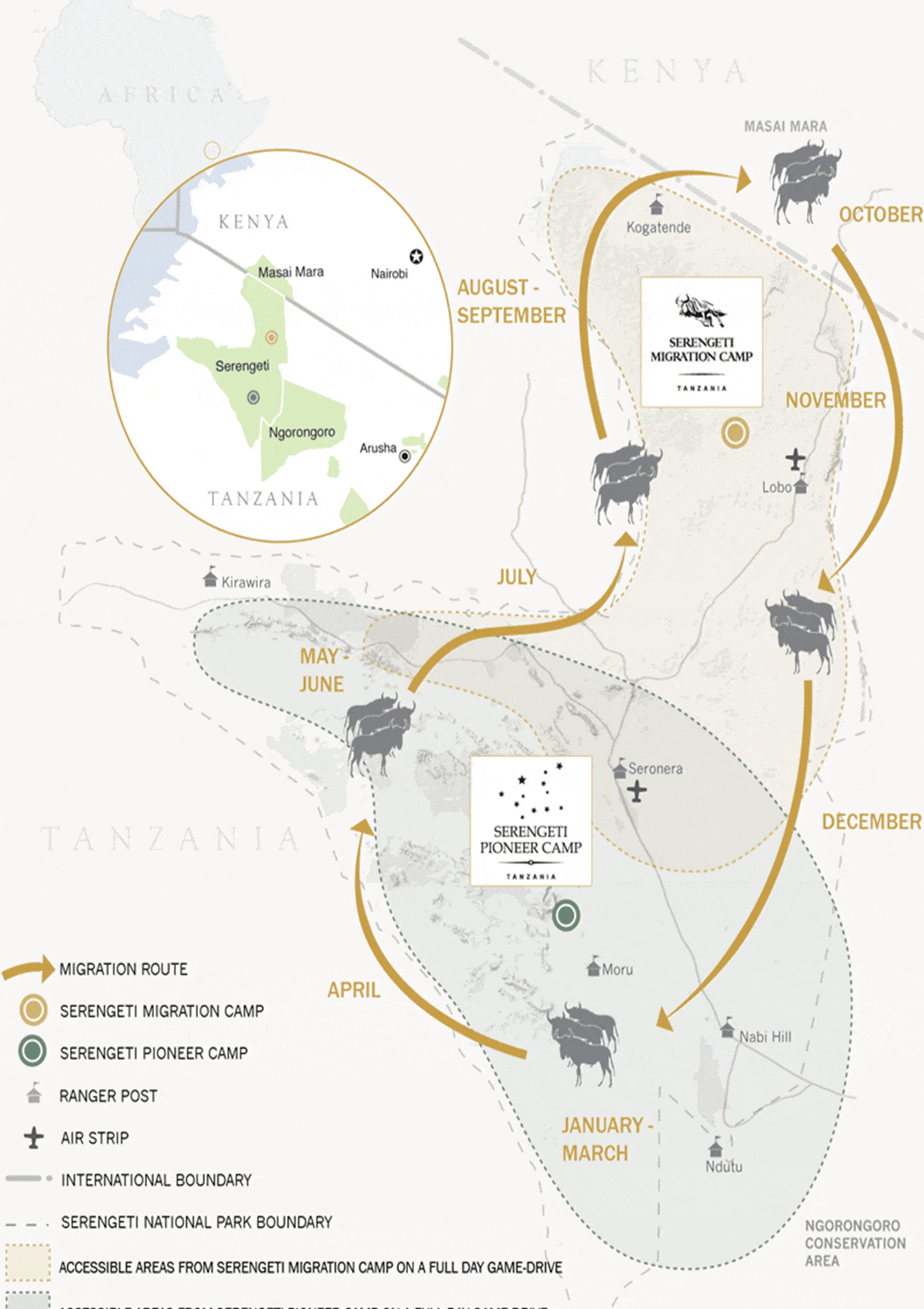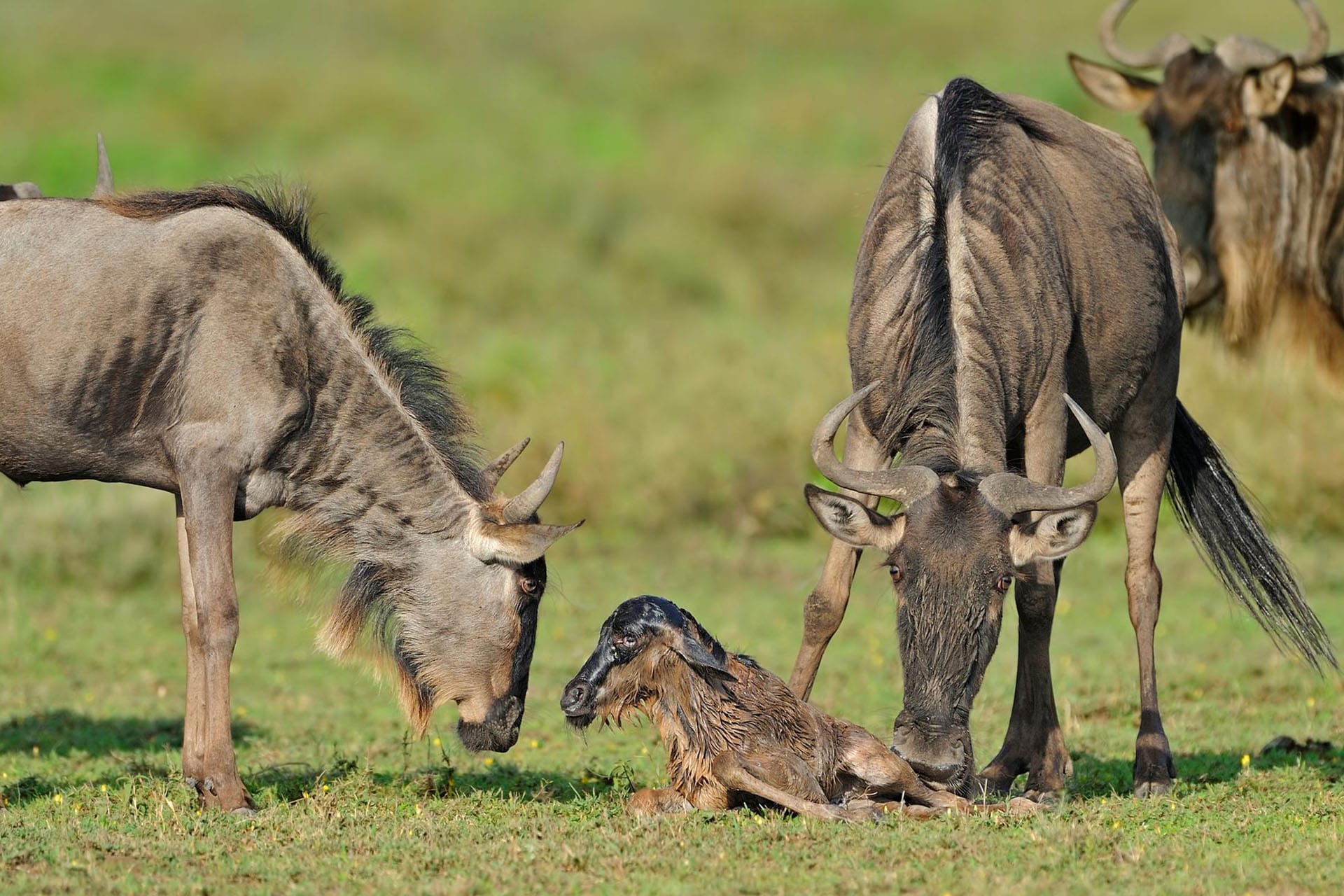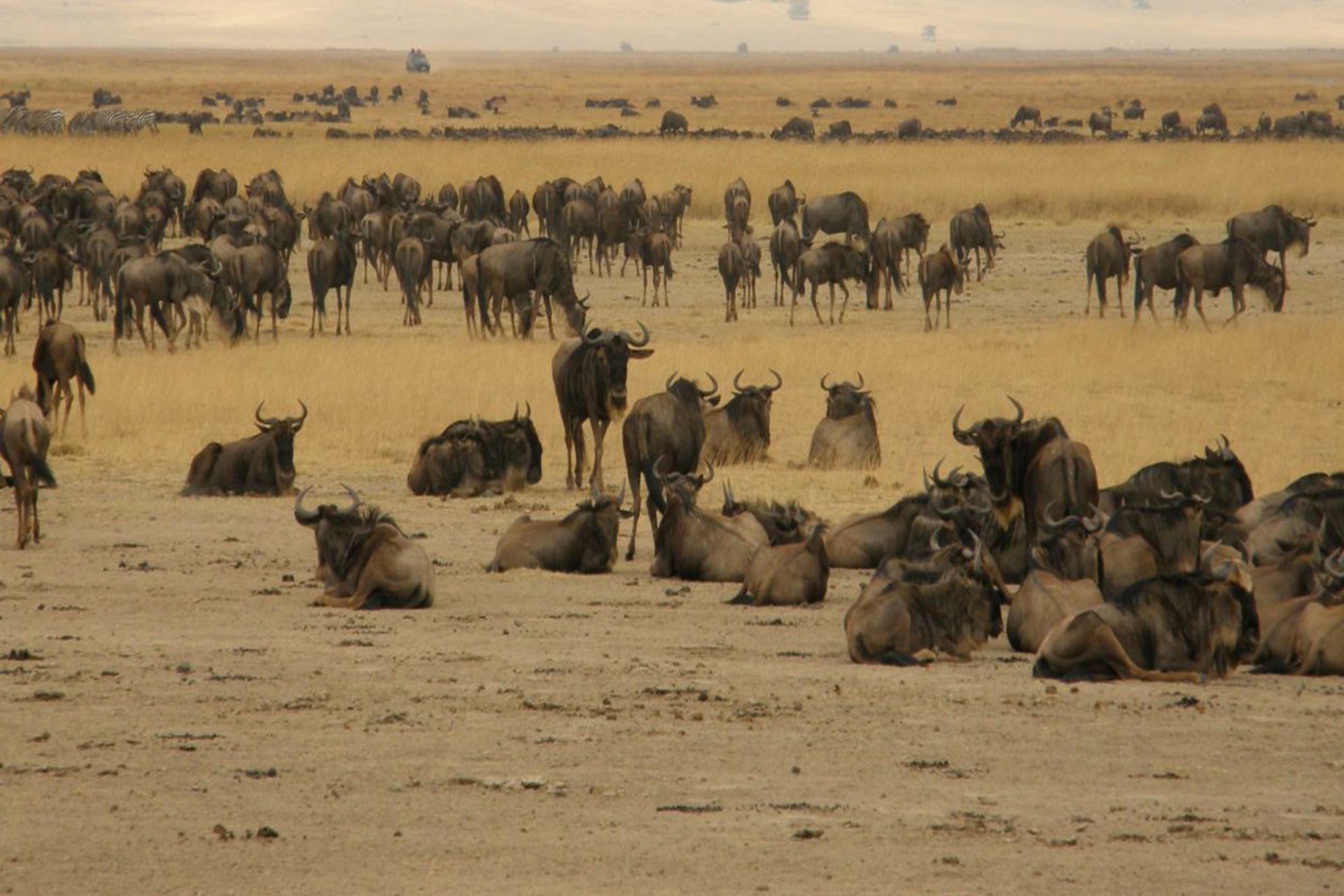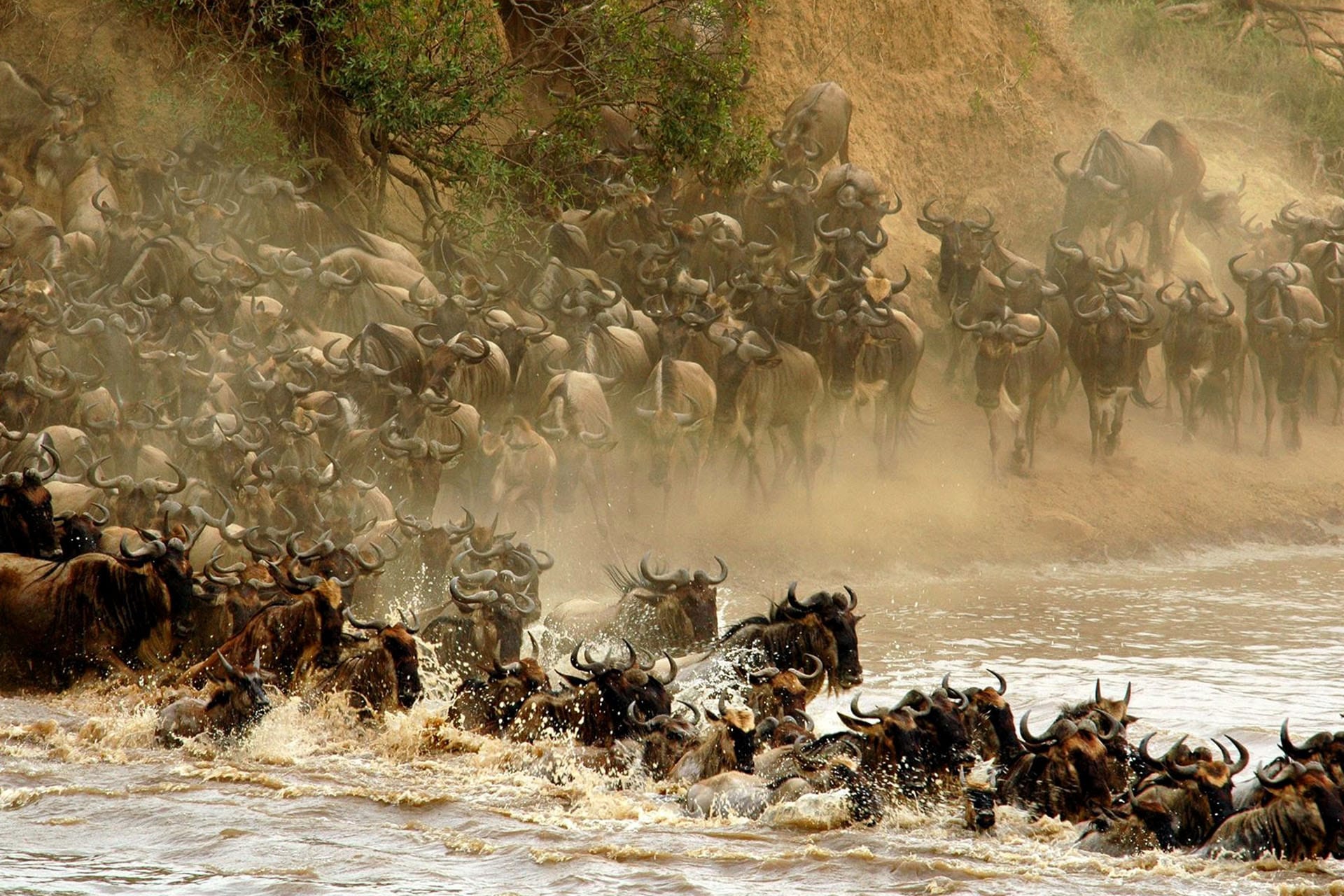Call Now / WhatsApp
+255 759 278 600The Great
Wildebeest Migration
The Great Wildebeest Migration is one of the most remarkable natural events that takes place annually in Tanzania & Kenya. It involves the movement of vast herds of wildebeest, as well as other herbivores such as zebras and gazelles, in search of greener pastures and water sources. The migration is a continuous cycle that primarily takes place between the Serengeti National Park in Tanzania and the Maasai Mara National Reserve in Kenya.
The Great Wildebeest Migration is a breathtaking demonstration of nature's resilience and an awe-inspiring sight that continues to captivate people worldwide. It offers a unique opportunity to observe the dynamics of predator-prey interactions, experience the vastness of the African savannah, and witness the sheer number of animals on the move.

The Great
Wildebeest Migration Monthly Calender

January - March
During these months, the wildebeest are usually found in the southern Serengeti, where they give birth to their young. The calving season is a remarkable sight as thousands of wildebeest calves are born within a short period. This period also sees an abundance of predator activity as lions, cheetahs, and other predators take advantage of the vulnerable young calves.

April - May
After bearing their young in February and March, around April the wildebeest herds begin to drift northwest toward the fresher grass of the central Serengeti, drawing with them thousands of zebra and smaller groups of antelope. By May, columns of wildebeest stretch for several kilometres as the animals start to congregate by the Moru Kopjes to Grumeti River

June - July
During June, large concentrations of wildebeest in the Western Serengeti and on the southern banks of the Grumeti River. Each migrating animal must face their first challenge of crossing the crocodile-infested river.
July, the hundreds of thousands of wildebeest and zebra continue to head north along the western edge of the park toward an even riskier barrier: the Mara River in the north of the Serengeti. These river crossings are arguably one of the most exciting wildlife events on Earth. But timing all depends on nature.

August - October
This period is known as the river crossing season and is perhaps the most famous part of the wildebeest migration. The herds make their way from the western Serengeti to the Maasai Mara in Kenya. The Mara River is a major obstacle, and the wildebeest must cross it to reach the lush grasslands on the other side.
These river crossings are dramatic and often accompanied by crocodile attacks and predator-prey interactions. The exact timing of the river crossings can vary, but they typically occur between July and September.

November - December
With the onset of the short rains, the wildebeest begin their return journey south towards the Serengeti. They move through the eastern part of the Serengeti, they are spread throughout the eastern and southern reaches. The cycle continues as the calving season starts once again.

